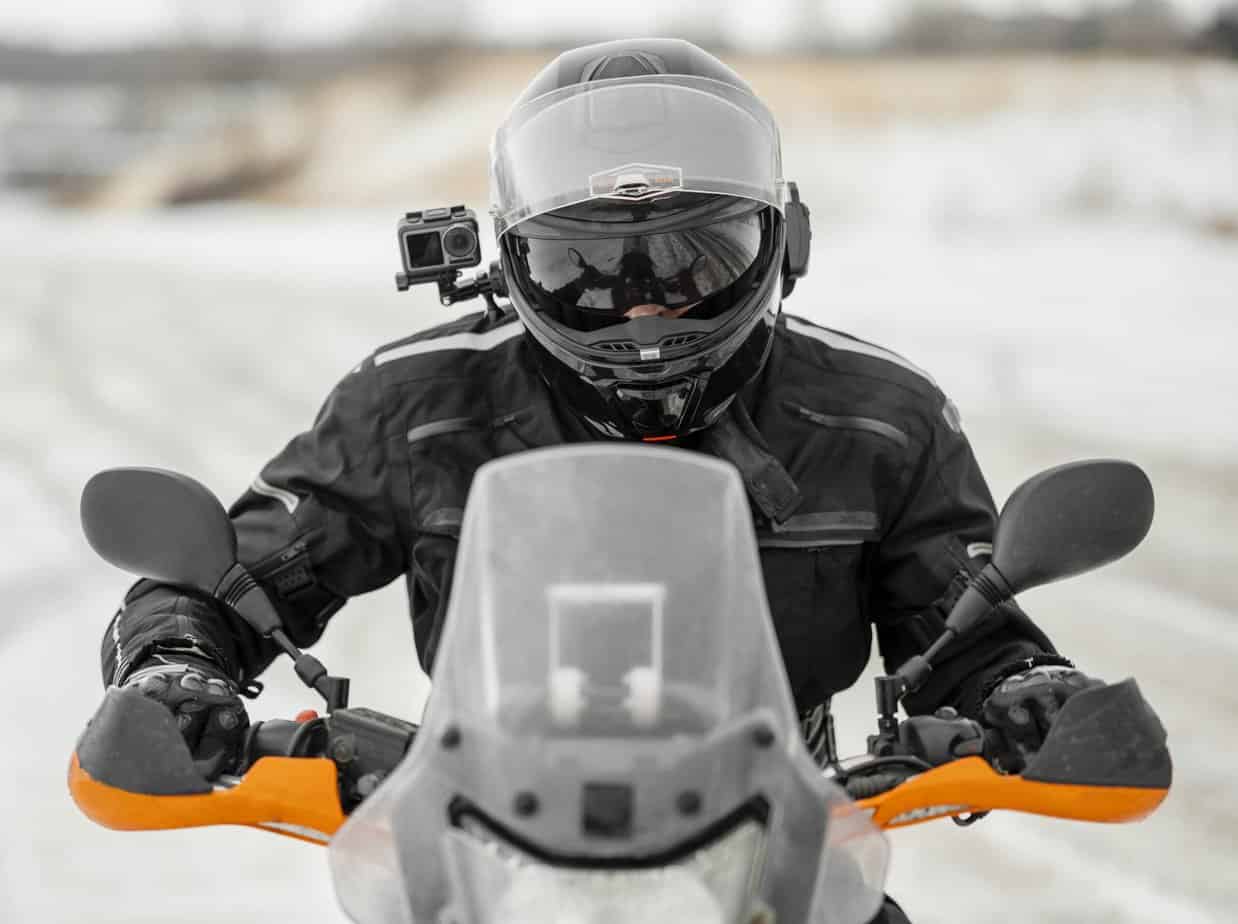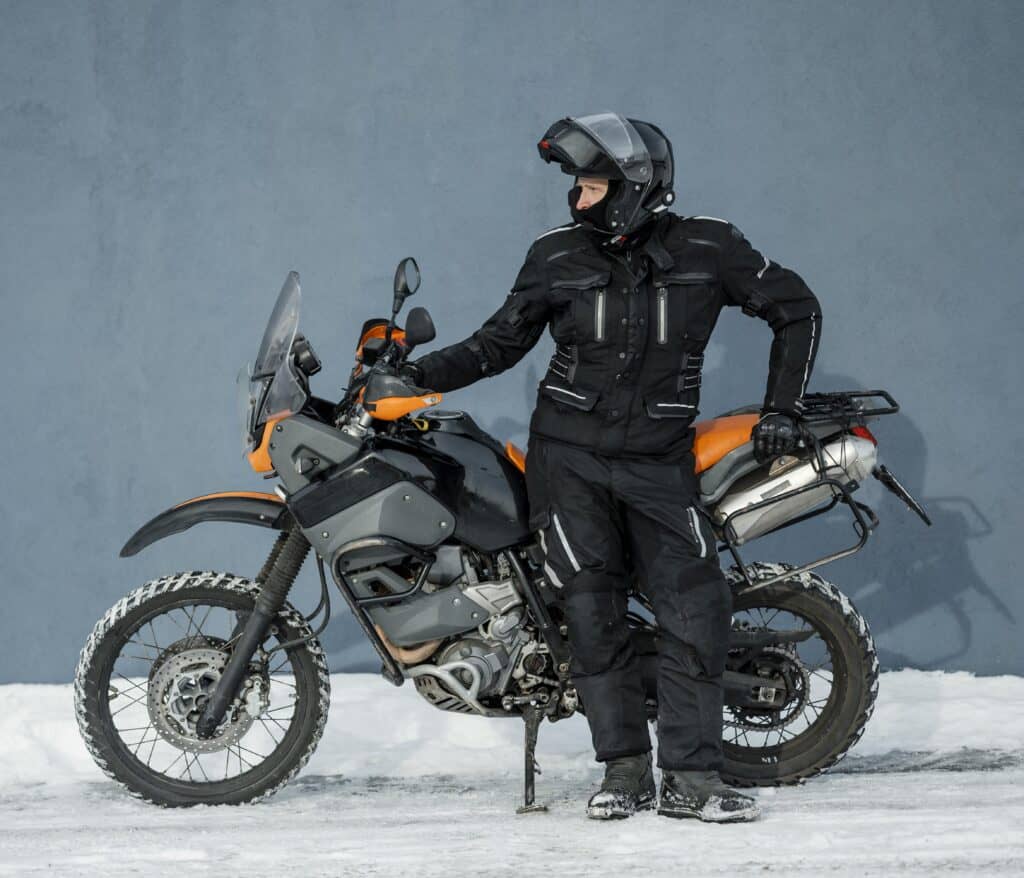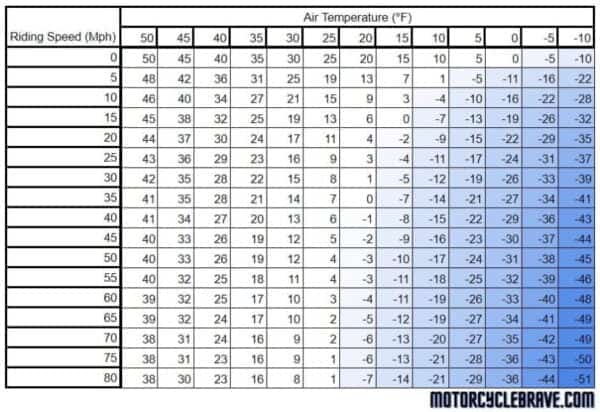How warm should it be to ride a motorcycle?
Ideal motorcycle riding temperatures range from 15.6°C to 26.7°C (60°F to 80°F). Riders can comfortably ride at a minimum of -3.9°C (25°F) in dry conditions, and 1.7°C (35°F) in wet conditions. Temperatures above 43.3°C (110°F) are generally too hot for safe riding.
With the approaching motorcycle season, many riders will start wondering when it is the best time to take their motorcycles out for a ride. Seasoned riders usually have a good idea when the temperatures are right. However, beginners may not be too sure and may not want to risk taking their motorcycle out of storage to realize it is not warm enough.
Table of Contents
Since motorcycle riders are constantly exposed to the outside environment, the ambient temperature outside and the weather conditions are a lot more important to them than to car drivers. With that being said, you will find information about what temperature ranges most motorcycle riders find enjoyable, as well as some other exciting information. So let’s take a look.

Ideal Motorcycle Riding Temperatures
The ideal motorcycle riding temperature, according to most motorcyclists, is between 15.6°C and 26.7°C (60°F and 80°F). Riding in this temperature range is often more enjoyable and comfortable, allowing for the best experience while wearing appropriate motorcycle gear.
Comfortable temperature ranges can vary among riders. Some may enjoy riding at temperatures as low as 4.4°C (40°F), while others might find even 10°C (50°F) too cold.
Conversely, some riders are comfortable in temperatures as high as 37.8°C (100°F), while for others, 32.2°C (90°F) may be too warm.
Generally, temperatures between 4.4°C and 26.7°C (40°F and 80°F) are considered suitable for motorcycling, with 21.1°C (70°F) often seen as the ideal temperature for most riders.
The outdoor temperature significantly influences gear choice. Below 10°C (50°F), some riders might opt for winter gear, which is often less comfortable than summer gear. The quality of the gear also plays a role in how well different temperatures are tolerated.
Humidity is another important factor. Most people find humidity levels of 55% or lower comfortable. At around 75% humidity, motorcycle riding can become unpleasant, with issues like discomfort during brief stops at traffic lights. While riding, the ambient temperature can mitigate discomfort slightly, but sweating can still be a problem.
As humidity reaches 100%, the air’s moisture can feel oppressive, especially in extremely warm weather.
Assessing Cold Weather Limits for Motorcycle Riding
Exploring the colder end of the spectrum, it’s crucial to understand what temperatures are too cold for motorcycle riding. This varies greatly among riders, especially those who ride year-round, as their tolerance often depends on the specific weather and climate conditions of their region.
Most motorcyclists consider temperatures between 3.9°C to -3.9°C (39°F to 25°F) too cold for riding. Some riders have ventured out in temperatures as low as -12.2°C (10°F), but at such frigid temperatures, wearing proper winter gear is essential.
Nevertheless, there are riders who choose to stop riding when temperatures drop below 1.7°C (35°F), especially if the roads are wet or there’s a risk of rain, snow, or ice.
Cold temperatures pose not just discomfort but also danger for motorcyclists. As the mercury drops, motorcycle tires tend to harden, losing their stickiness and traction on the road, which can increase the risk of accidents.
Determining Too Warm Temperatures for Motorcycle Riding
A common question among motorcyclists is what temperature range is considered too warm for riding. Most motorcyclists find temperatures between 32.2°C and 43.3°C (90°F to 110°F) uncomfortably warm for motorcycle riding. Temperatures above 43.3°C (110°F) are usually deemed too hot for riding, regardless of the gear worn.
However, the threshold for what is too warm varies from one rider to another, as personal tolerance to heat can differ.
Despite this, wearing gear specifically designed for hot weather can significantly enhance comfort during rides in the summer. Such gear can make riding in temperatures from 26.7°C to 48.9°C (80°F to 120°F) more bearable.
It’s important to note that in extremely high temperatures, riding at faster speeds may not provide relief. Contrarily, it could increase the feeling of heat.

Riding Motorcycles in Warm Weather: Considerations and Precautions
Is riding a motorcycle in warm weather terrible? Not necessarily, provided that appropriate safety measures are in place.
Riding at temperatures over 35°C (95°F) can cause the wind to warm you up instead of cooling you down. In such conditions, wearing appropriate summer gear is essential to protect against extreme heat. This may include an evaporative cooling vest, neck wrap, mesh gear, or a moisture-wicking base layer.
In regions with both high temperatures and high humidity, staying cool can be challenging. In such cases, it might be wise to postpone rides during the hottest parts of the day.
Hydration is paramount, as dehydration can occur rapidly and is not only a health hazard but can also impair reaction time and decision-making. The risk of heatstroke is a serious concern and should not be underestimated.
Frequent breaks are recommended, even if you don’t feel tired, to help manage the effects of extreme heat.
Additionally, extreme heat can adversely affect your motorcycle. While it’s normal for the engine to get hot, it can overheat more easily when used in the summer under direct sunlight.
Read next: Do Motorcycle Cooling Vests Really Work? (Explained)
Motorcycle riding temperature chart
When considering how warm it should be for you to start riding your motorcycle, often people will talk about the windchill factor. Or how warm/cold it will feel riding your motorcycle at different speeds at different temperatures.
Riding Temperature charts

Understanding Windchill in Motorcycle Riding
Windchill is typically calculated for temperatures up to 10°C (50°F), and it always results in a lower perceived temperature. For instance, if the outside temperature is 10°C (50°F) and you’re riding at 50 mph, it might feel more like 4.4°C (40°F) due to the windchill effect.
However, windchill is not always the best measure for motorcycle riding comfort, as various factors can influence how cold or warm you feel. Moreover, the windchill index was originally designed to assess frostbite risk, not to gauge the precise temperature sensation.
For example, at a temperature of 7.2°C (45°F) with a windchill of 0°C (32°F) while riding at 55 mph, the risk of frostbite is similar to what it would be at a stationary 0°C (32°F).
This metric, though useful, doesn’t always align with real-world experiences. This discrepancy becomes more pronounced in warmer weather. When the temperature reaches around 37.8°C (100°F), the wind can actually increase body heat rather than cool it down.

Meet Simon, the 46-year-old aficionado behind YourMotoBro. With a lifelong passion ignited by motocross dreams and a Canadian Tire bicycle, Simon’s journey has been nothing short of extraordinary. From coaching underwater hockey to mastering muddy terrains, he’s an authority in thrill and adventure. Certified as an Off-Road Vehicle Excursion Guide and trained in Wilderness First Aid, Simon’s love for bikes is as diverse as his collection—from a robust BMW GSA R1200 to the memories of a Harley Davidson Night Train. By day a respected telephony consultant, by night a motorcycle maestro, Simon’s tales are a blend of expertise, resilience, and undying passion. ?️✨
